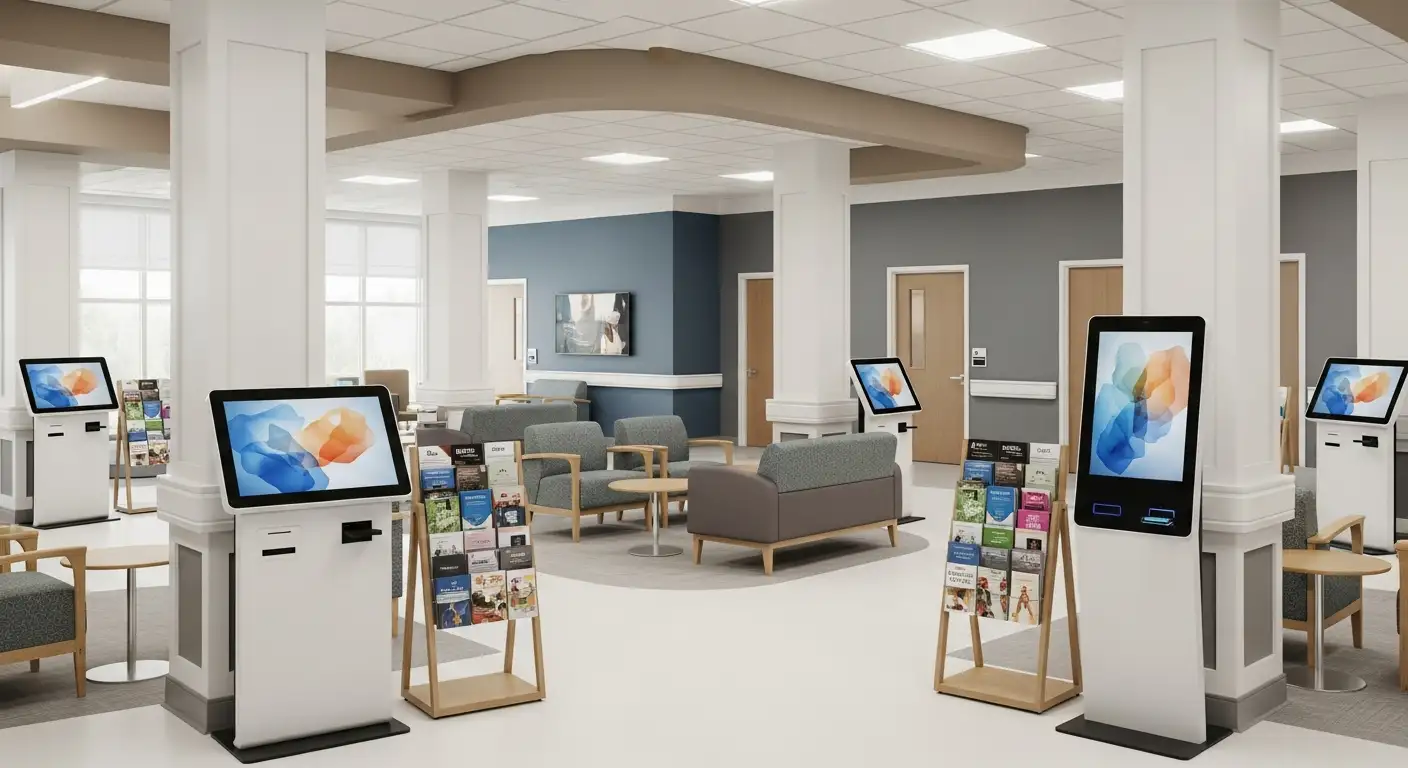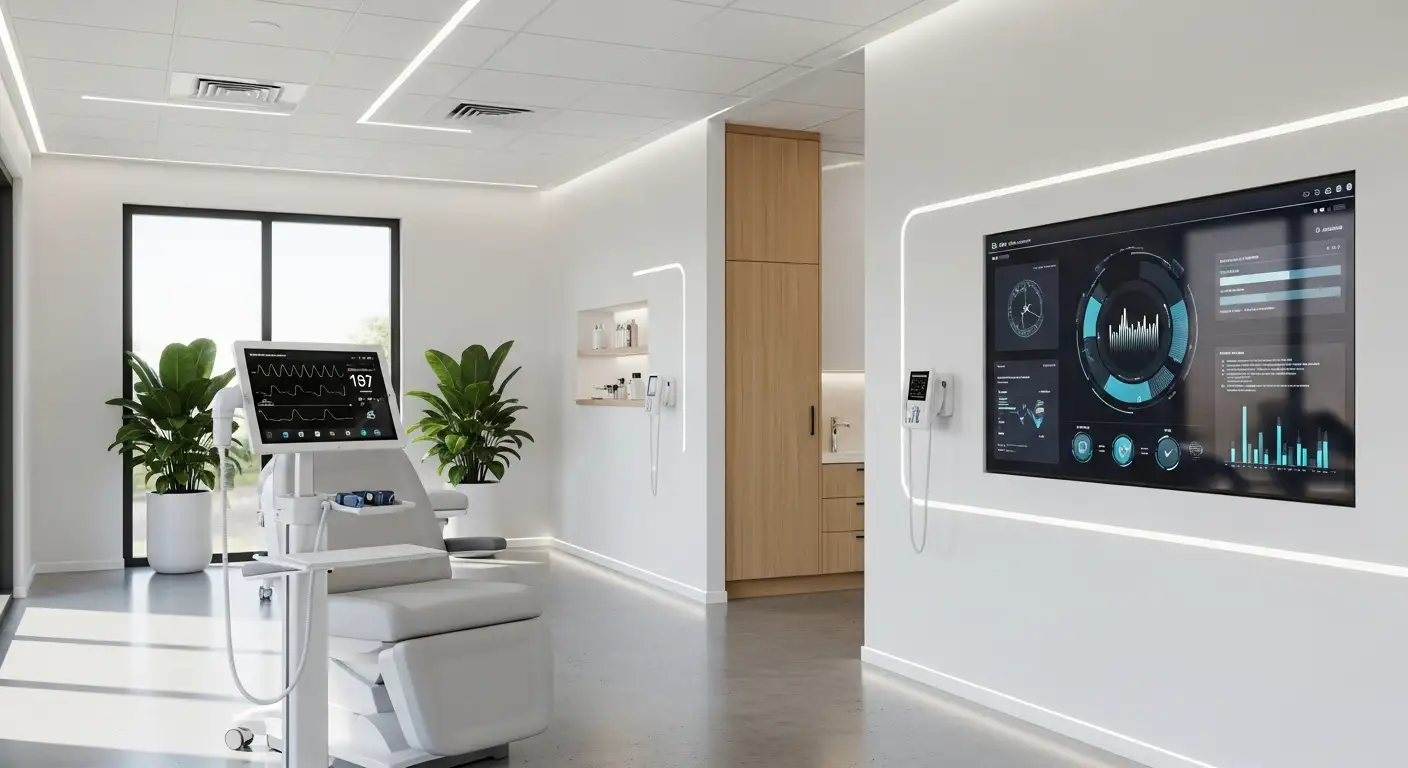Trends in At-Home Lab Testing for Adults

Understanding the Shift Toward At-Home Lab Testing
In recent years, the landscape of adult healthcare testing has undergone a significant transformation, driven by technological innovation, consumer demand, and global health challenges. At-home lab testing, once a niche market, is now emerging as a mainstream solution that promises increased accessibility, convenience, and privacy. This article explores the current trends, technological advancements, and industry developments shaping the future of at-home diagnostic testing for adults.
Current Technological Advancements Enabling At-Home Testing
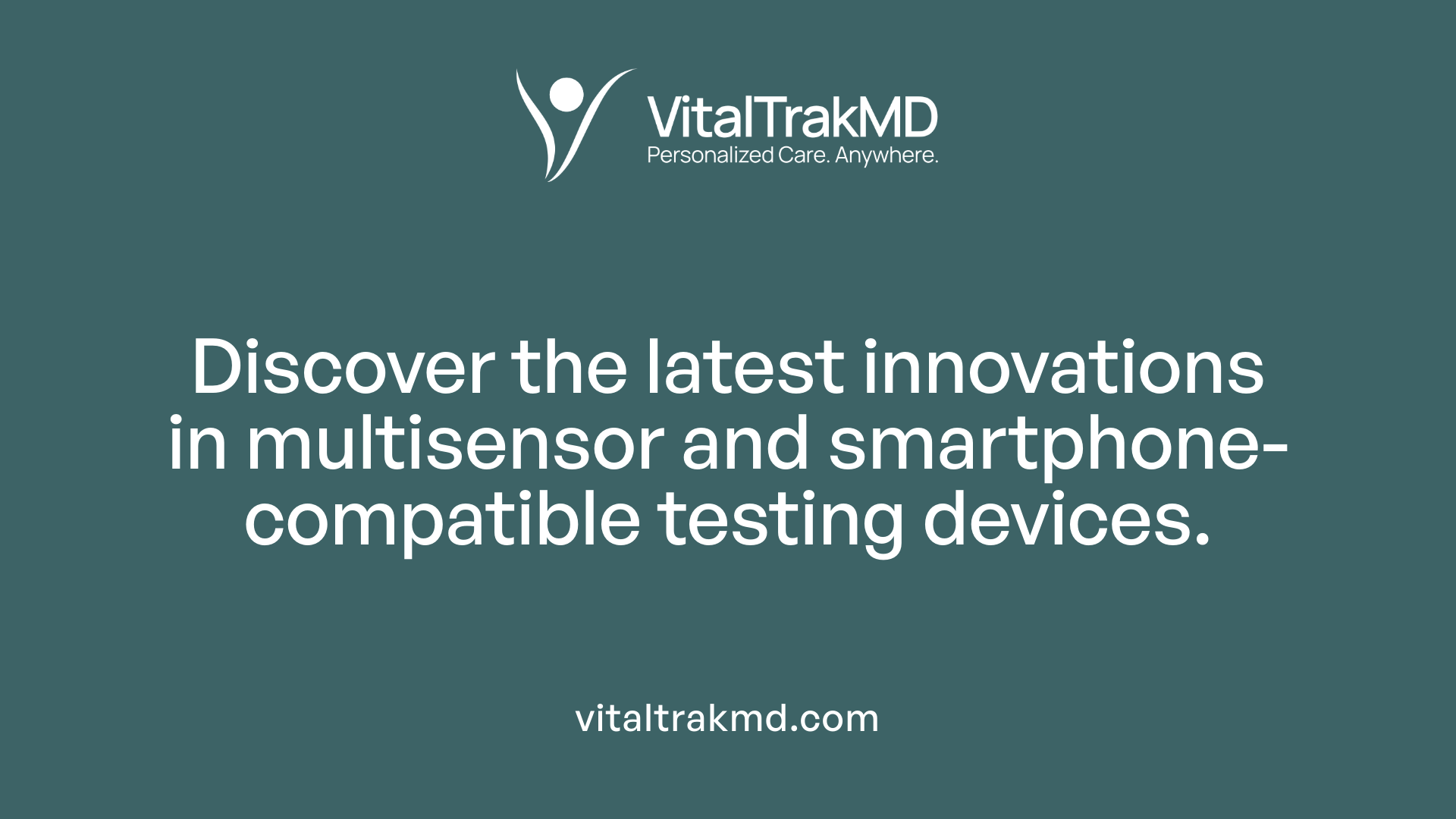
What innovative test devices and multisensor integration are shaping at-home testing?
Recent advancements have led to the development of sleek, user-friendly devices that incorporate multiple sensors to monitor various health parameters from a single blood drop or sample. These innovative tools allow for comprehensive testing — such as combined glucose, ketone, and stress hormone monitoring — in a portable format suitable for at-home use. For example, continuous glucose-ketone monitoring systems developed by Abbott Laboratories provide real-time tracking for diabetic and health-conscious users. These multisensor devices not only streamline the testing process but also improve the accuracy and depth of health insights available outside traditional labs.
How smartphone compatibility and AI enhancements are transforming home diagnostics?
Smartphone integration is a game-changer, making complex diagnostic tests more accessible and easier to interpret. Many at-home testing kits now come with companion apps that guide users through sample collection, interpreting results with AI-driven algorithms that increase reliability. For instance, some microbiome and genetic testing devices link directly to smartphones, displaying results clear and quick, while data security protocols protect user privacy. AI enhancements in these systems help identify patterns, monitor changes over time, and even flag abnormal results for prompt medical attention, bridging the gap between self-testing and clinical diagnosis.
What role does regulatory oversight, such as FDA approval, play in at-home testing kits?
Regulatory approval from agencies like the Food and Drug Administration (FDA) is crucial for establishing the credibility and safety of at-home testing kits. Some companies, such as EverlyWell, receive FDA approval for their testing tools, which boosts consumer confidence and supports integration into medical workflows. FDA-approved kits have undergone rigorous testing for accuracy, reliability, and consistent performance, making them more trustworthy for health decision-making.
However, many emerging products still lack such approval, raising concerns about accuracy and possible misinterpretation. As the at-home testing industry expands, ongoing regulatory oversight is essential to ensure quality standards are met, protecting consumers from false results and harmful misdiagnoses. The evolving landscape also involves new coding and reimbursement initiatives to facilitate broader healthcare system acceptance of these innovations.
The Expanding Industry and Market Growth
What is the outlook for the at-home testing market and how is it projected to grow?
The market for at-home diagnostic testing kits is experiencing rapid expansion. In 2021, its valuation reached approximately USD 16.7 billion. Experts expect this figure to nearly triple by 2031, surpassing USD 45.5 billion, growing at an impressive compound annual growth rate (CAGR) of around 10.5%. This upward trajectory reflects increasing consumer acceptance, technological advancements, and expanding disease detection capabilities. The forecast also underscores a robust demand driven by aging populations and rising chronic health conditions worldwide.
How did COVID-19 influence the adoption and demand for at-home testing?
The COVID-19 pandemic significantly accelerated the adoption of at-home testing. Widespread use of COVID-19 self-test kits created a cultural shift, making consumers more comfortable with home-based diagnostics. This surge not only facilitated pandemic control efforts but also heightened awareness of the convenience and privacy at-home tests offer.
During the pandemic, public health initiatives promoted self-testing alongside traditional methods like PCR tests and vaccination campaigns. As a result, the general perception of at-home testing moved from supplementary to essential. The infrastructure and familiarity gained during COVID-19 are now paving the way for broader adoption of tests for other health conditions.
Which companies are leading the innovation in at-home testing devices?
Key players in the industry include Abbott Laboratories, F. Hoffmann-La Roche Ltd, Biomerieux SA, and OraSure Technologies Inc. These companies have launched innovative products, ranging from continuous glucose monitoring devices to comprehensive self-testing kits for infectious diseases. Many have received regulatory approvals such as FDA clearance, ensuring the reliability of their tests.
Recently, companies like Everlywell raised substantial funding to expand their product portfolios and streamline manufacturing processes. Additionally, new entrants are integrating sensors, artificial intelligence (AI), and smartphone compatibility to create smarter, more accessible devices for consumers.
How is consumer interest shaping the growth of at-home testing?
Interest among consumers, especially older adults and marginalized communities, continues to grow. Surveys indicate that over 80% of adults aged 50-80 have purchased at least one at-home test and are eager to use these tools for ongoing health monitoring.
Personal health monitoring devices that track parameters such as cholesterol, hormone levels, and kidney function are becoming more commonplace. This trend is driven by a desire for early detection and ongoing management of chronic illnesses, alongside a preference for privacy and convenience.
What challenges does the industry face?
Despite promising growth, the industry faces obstacles. Concerns about test accuracy and regulatory standards persist, especially since not all tests are FDA-approved. Consumer uncertainties regarding proper use and interpretation contribute to hesitations.
Additionally, the traditional healthcare infrastructure remains cautious, and reimbursement policies are evolving. These challenges underscore the importance of rigorous validation, transparent marketing, and regulation to ensure consumer safety and trust.
How is the market segmented and what does its future hold?
The market is segmented by product type, application, and region. For instance, the adult segment dominates due to high prevalence rates of chronic diseases like diabetes and cardiovascular conditions.
North America currently leads the market, largely because of technological infrastructure and COVID-19 testing uptake. Meanwhile, regions such as Asia-Pacific are anticipated to grow at the fastest rate due to rising incomes, healthcare access, and technological developments.
Specifically, innovations such as digital pathology and remote diagnostics are poised to further enhance home testing capabilities. The integration of AI, sensor technology, and smartphone apps will likely enable real-time health monitoring.
Below is a summary table highlighting key statistics and future projections:
| Aspect | Data | Additional Details |
|---|---|---|
| Market size 2021 | USD 16.7 billion | Growing rapidly due to technological advances |
| Forecast size 2031 | USD 45.6 billion | Projected to surpass USD 45 billion |
| CAGR | 10.5% | From 2021 to 2031 |
| Regional dominance | North America | Significant due to leading industry players |
| Fastest growth | Asia-Pacific | Driven by economic growth and technological adoption |
| Emerging trends | Digital health integration | Use of sensors, AI, smartphone compatibility |
| Challenges | Accuracy, regulation, consumer understanding | Need for improvements and oversight |
By embracing technological innovation and addressing regulatory barriers, the industry aims to make at-home testing an integral part of personal and clinical healthcare, ensuring safer, faster, and more accessible diagnostics for all.
Consumer Acceptance, Preferences, and Behavior
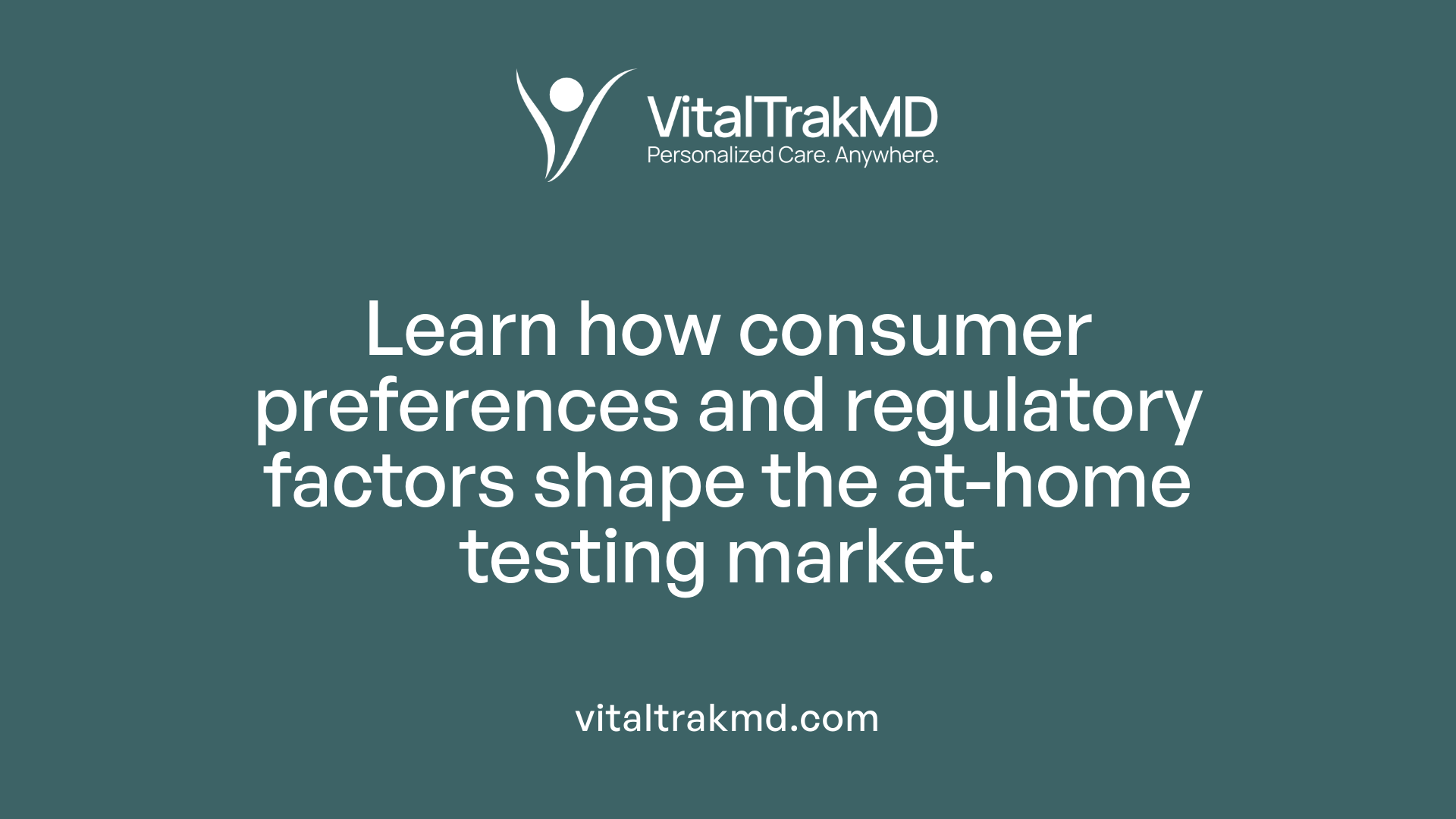
What happened to Lab Tests Online?
Lab Tests Online was acquired by OneCare Media in January 2021, shifting from its operation under the American Association for Clinical Chemistry (AACC). Since then, it has continued to be a trusted resource, providing comprehensive information on laboratory tests. It supports both healthcare providers and consumers by elucidating test significance, interpretation, and reference ranges, helping users make informed decisions about testing.
What lab tests can be done at home?
In recent years, the variety of lab tests that consumers can perform at home has expanded significantly. These at-home tests range from pregnancy tests and blood glucose monitors, often used by individuals with diabetes, to more complex assessments like genetic screenings, infectious diseases, and wellness diagnostics.
Many of these kits are designed for self-collection, where users follow specific instructions to gather samples such as blood drops, saliva, urine, or stool. The samples are then sent to laboratories like Labcorp or Quest Diagnostics for detailed analysis. This process provides an attractive combination of privacy, convenience, and immediate access to information.
Despite each test’s usefulness, the importance of selecting FDA-approved or FDA-authorized kits cannot be overstated. Proper adherence to instructions and regulatory standards ensure accuracy and safety, making self-testing a reliable option for many.
Are at-home blood tests worth it?
For many adults, especially those facing barriers in traditional healthcare access, at-home blood testing offers substantial benefits. These tests can facilitate early detection of health issues, ongoing monitoring of chronic conditions like diabetes or hypertension, and general health assessments.
Although concerns about test accuracy and regulatory oversight persist, well-designed at-home tests that comply with quality standards can significantly improve health management. They are particularly advantageous for older adults, people with disabilities, or those living in remote or underserved areas where access to clinics or labs is limited.
The COVID-19 pandemic further accelerated the acceptance and use of at-home testing devices, proving their value in public health and personal health contexts.
Preferences for painless and easy-to-use devices
Consumer preferences increasingly favor painless, simple, and user-friendly at-home testing solutions. A notable 74% of respondents express interest in painless blood collection methods, like finger-prick tests, that eliminate the discomfort of traditional venipuncture. Additionally, 76% of individuals who experience pain from standard blood draws are willing to pay out-of-pocket to access less painful alternatives.
Innovators in the field are responding by developing sleek devices, such as automated lancet systems, microneedle patches, and integrated sensors, which aim to make testing more comfortable and accessible. These advances not only improve user experience but also encourage more consistent health monitoring.
Concerns about test accuracy and regulatory approval
Despite the growing popularity, consumer concerns about the accuracy of at-home tests remain prevalent. About one-third of physicians express caution regarding the reliability of certain tests, especially those lacking FDA approval. There is also skepticism about whether these tests can meet clinical standards outside traditional lab settings.
Regulatory oversight is critical to assure consumers of test validity. Tests with FDA approval, such as some devices from EverlyWell and others, tend to have higher trust levels. However, the lack of regulatory clarity on some emerging at-home tests could undermine confidence and willingness to rely solely on self-administered diagnostics.
Behavioral barriers: travel, anxiety, and needle fears
Certain behavioral barriers continue to hinder the full adoption of at-home testing. A primary concern is the difficulty and inconvenience associated with traveling to medical facilities—nearly 69% of consumers are unwilling to travel more than 10 miles for testing, making at-home options more appealing.
Additionally, anxiety related to medical procedures affects 78% of individuals, often deterring them from undergoing necessary tests in clinical settings. Needle phobia is another significant hurdle, with 37% of people expressing fear of needles, which can be alleviated through painless testing technologies.
To address these barriers, companies and healthcare systems are investing in painless, remote collection methods and mobile phlebotomy services, making health assessment easier and less distressing.
Market growth and future trends
The at-home testing industry is expanding rapidly—a reflection of shifting consumer habits, technological advancements, and the global health landscape shaped by COVID-19. The market for at-home testing kits, valued at over USD 7.7 billion in 2025, is projected to grow annually by approximately 6.1% through 2029.
Innovations include integration of digital health platforms, use of AI, and smartphone-compatible sensors that enable real-time monitoring and data sharing. Companies are also working on advanced devices such as continuous glucose monitors and stress hormone sensors, which promise to personalize health tracking.
This growth is not just driven by consumer demand but also by increased healthcare integration. For example, collaborations between digital health companies and pharmacies are creating new pathways for at-home testing to become part of routine healthcare, similar to cholesterol checks linked with medication management.
A summary of consumer perspectives and market dynamics
| Aspect | Details | Additional Notes |
|---|---|---|
| Willingness to try | Many consumers eager for convenient, painless testing | 74% interested in painless home blood collection |
| Purchase behavior | Over a third postponed tests, but many willing to buy online | Growing DTC market, over $1 billion in 2022 |
| Preferences | Ease, privacy, quick results | Innovations focus on comfort and digital integration |
| Concerns | Accuracy, FDA approval, proper test use | Demand for regulatory assurance |
| Barriers | Travel, anxiety, needle fears | Mobile services and painless methods mitigate issues |
As the industry progresses, understanding and addressing consumer preferences and hesitations will be pivotal. Ensuring regulatory compliance, improving test accuracy, and enhancing user comfort are essential for widespread adoption. The trend towards decentralized, accessible healthcare via at-home testing is only set to grow.
Emerging and Future Testing Methods and Products
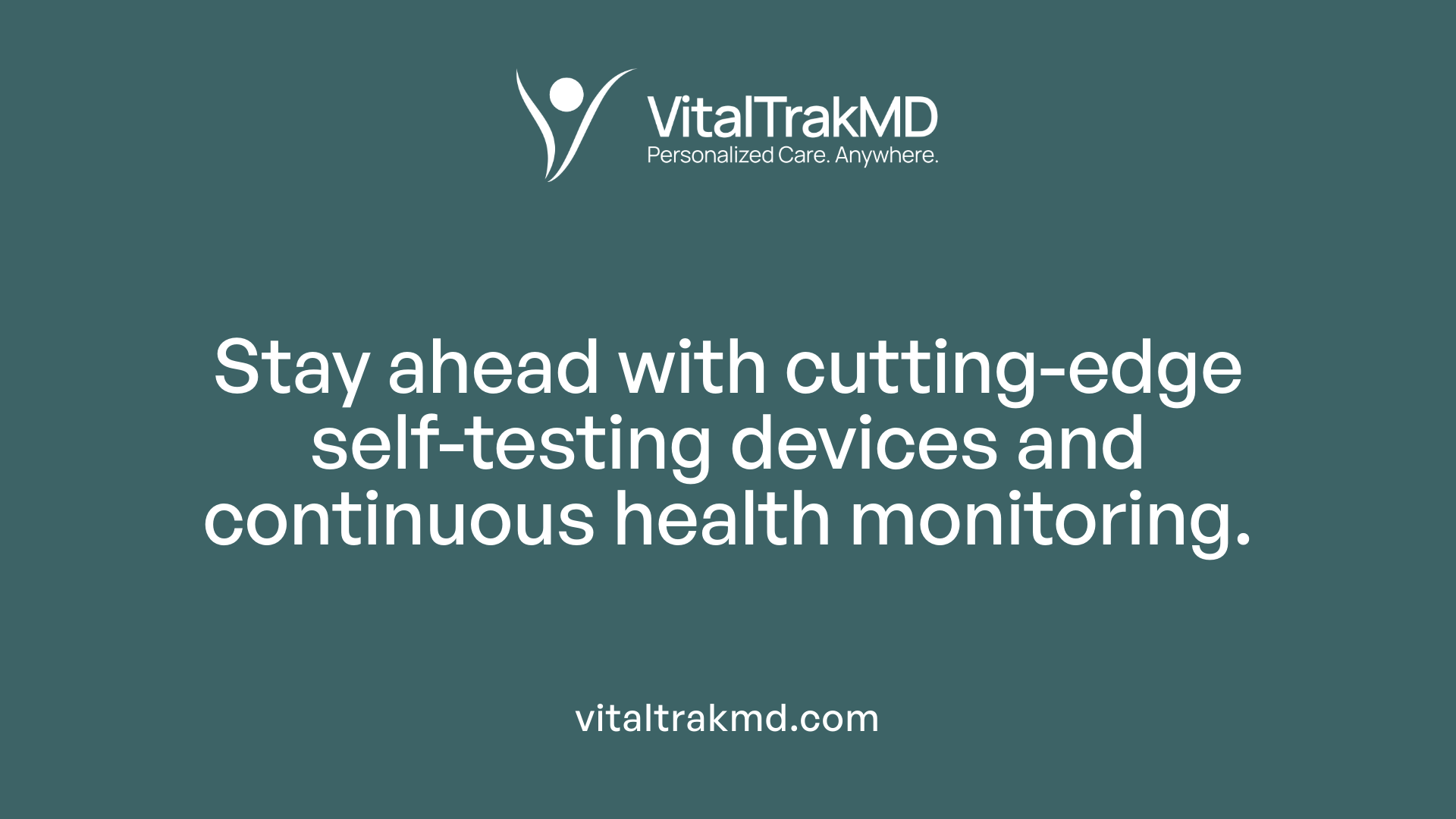
What innovations are shaping the future of diagnostic testing?
The landscape of diagnostic testing is rapidly evolving with the integration of advanced technologies such as microsensors, artificial intelligence (AI), and digital platforms. These innovations are set to transform how health data is collected, analyzed, and utilized, providing users and healthcare providers with more accurate, convenient, and real-time insights.
One of the most promising developments is the deployment of microsensors capable of continuous health monitoring. For example, recent advancements include devices that can track cortisol levels directly from a single blood drop, offering real-time stress hormone assessment. Such innovations could enable early detection of stress-related conditions and support personalized healthcare management.
In addition, AI-powered diagnostics are increasingly incorporated into home testing devices. These systems analyze complex data, improve test accuracy, and facilitate user-friendly interfaces. Integration with smartphones and digital health platforms further enhances accessibility, allowing consumers to receive immediate feedback, store health data securely, and share results with healthcare providers effortlessly.
What is the potential of real-time stress hormone monitoring?
Real-time monitoring of stress hormones like cortisol is a game-changer in health management. Traditional methods require lab visits and lagging results, but new microsensor-based devices promise instant readings.
These tiny sensors, embedded into wearable gadgets or small blood collection devices, analyze hormones continuously, providing valuable insights into an individual’s stress levels throughout the day. This capability not only aids in managing mental health but also supports early diagnosis of hormonal imbalances and related disorders.
How are digital health platforms enhancing at-home testing?
Digital health platforms are playing a crucial role in expanding the reach and functionality of at-home diagnostics. They serve as hubs where users can connect, track, and interpret data from various tests. For instance, some platforms now integrate cholesterol testing kits with real-time drug prescription updates, making health management more streamlined.
Moreover, apps linked to at-home testing devices offer guidance on correct test procedures, provide educational resources, and facilitate virtual consultations. This seamless integration helps bridge the gap between remote testing and clinical care.
What upcoming products and innovations are expected in self-testing devices?
The pipeline of self-testing devices is robust, with several innovative products on the horizon. Examples include advanced continuous glucose-ketone monitors by major labs like Abbott, which could revolutionize diabetes management.
In the realm of infectious diseases, next-generation home tests aim to deliver rapid, accurate detection of respiratory viruses, including influenza and coronaviruses, directly at home. Eye health assessments are also advancing, with devices such as the EyeQue VisionCheck poised to provide instant eyesight evaluation.
Furthermore, the development of integrated diagnostic tools that combine sensors, AI, and smartphone compatibility aims to offer comprehensive health assessments in one device. These tools could monitor multiple health parameters, from hormone levels to artery stiffness, enabling proactive health strategies.
| Technology/Innovation | Description | Impact/Outcome |
|---|---|---|
| Microsensors | Detect hormones and biomarkers in real time | Early diagnosis, stress management |
| AI integration | Enhance test accuracy and interpret data | User-friendly, reliable results |
| Digital platforms | Connect devices, store and analyze data | Better health tracking |
| Self-monitoring devices | Continuous glucose-ketone, artery stiffness | Chronic disease management |
| Rapid infectious disease tests | Detect viruses instantly | Outbreak control, self-isolation |
As the field advances, regulatory approvals and validation studies will be pivotal to ensure these innovations deliver safe and accurate results. Continuous research and investment are expected to drive further breakthroughs, making at-home diagnostics more sophisticated and accessible than ever before.
Regulatory and Public Health Challenges
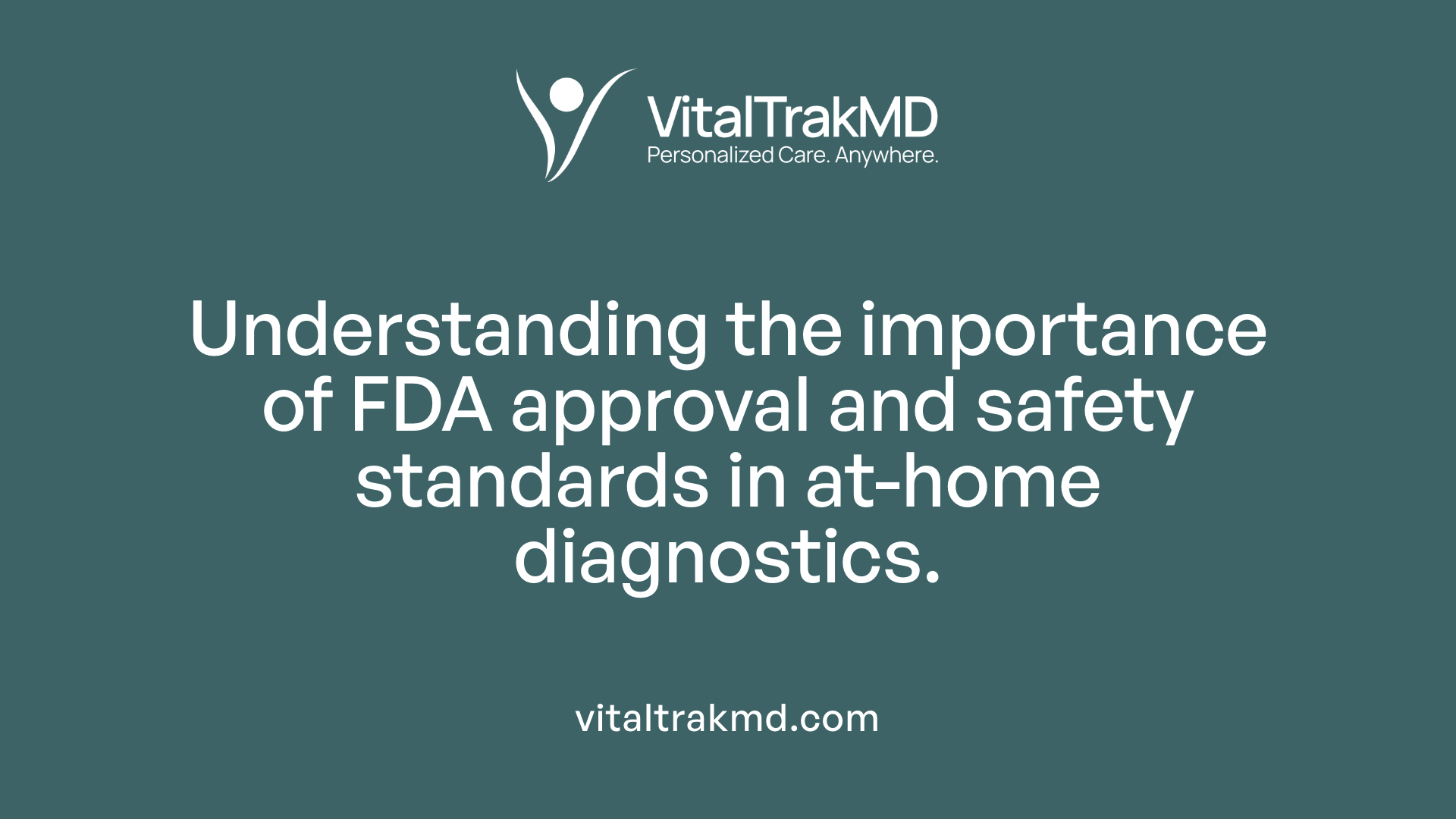
What happened to Lab Tests Online?
Since being acquired by OneCare Media in 2021, Lab Tests Online continues to serve as a fundamental educational platform within the diagnostic testing landscape. This resource aims to help both consumers and healthcare professionals navigate the complexities of laboratory testing, including understanding regulatory standards and test interpretations. Its ongoing presence is especially vital as the industry rapidly evolves with new at-home testing technologies and expanding regulatory frameworks. Lab Tests Online remains instrumental in providing reliable, up-to-date information that fosters informed decision-making amid these changes.
What lab tests can be done at home?
A broad array of tests are now available for at-home use, including pregnancy tests, blood glucose monitoring, genetic analyses, and tests for infectious diseases such as COVID-19. While these options enhance convenience and privacy, their safety and effectiveness largely depend on regulatory oversight. FDA approval, in particular, plays a crucial role in ensuring that at-home tests meet established standards for accuracy and reliability. Without rigorous regulation, some kits—especially those sold without FDA clearance—may produce false positives or negatives, potentially leading to misdiagnosis or unnecessary anxiety.
Are at-home blood tests worth it?
The value of at-home blood testing largely hinges on the reliability and regulatory approval of the specific devices or kits used. While many consumers appreciate the ease and privacy these tests offer, concerns about their accuracy persist, especially for products lacking FDA approval. Tests with verified accuracy can be powerful tools for early detection, chronic disease monitoring, and health management.
However, unregulated or poorly validated tests carry the risk of misleading results, which may cause unnecessary worry or false reassurance. Therefore, strengthening regulatory oversight is vital to ensure these tests are both trustworthy and beneficial for public health. Proper regulation can help optimize the potential of at-home testing to democratize healthcare and facilitate timely medical intervention.
FDA Approval and Oversight Issues
One of the major hurdles for the at-home testing industry involves obtaining FDA approval. While some companies, like EverlyWell, have successfully secured FDA clearance for their products, many others operate without this certification. This lack of regulation raises concerns about test accuracy, consumer safety, and the reliability of results.
The absence of a dedicated regulatory framework for many direct-to-consumer and self-testing kits means that consumers often face uncertainty regarding their trustworthiness. Policymakers are working to develop clearer guidelines and pathways for approval, but progress remains uneven. This regulatory gap underscores the need for stricter evaluation processes to ensure all available tests meet essential standards.
Test Accuracy and Consumer Safety Concerns
Inaccurate results from poorly validated at-home tests can have serious repercussions. False negatives may delay necessary medical treatment, while false positives could cause undue stress and further diagnostic procedures. Experts like Dr. Annette Plüddemann highlight that current regulations do not always require real-world effectiveness studies for these tests, which further complicates their safe use.
Consumer safety is also a concern regarding proper sample collection and test administration. Many users lack direct supervision and may perform tests incorrectly, leading to unreliable outcomes. Education on proper test use and storage, alongside regulatory measures, are vital to safeguard public health.
Equity in Access for Underserved Populations
Despite their advantages, at-home tests have yet to reach all segments of the population equally. Data shows lower usage among certain demographic groups, including Black communities, older adults, lower-income households, and those with limited education. These disparities may be due to gaps in awareness, affordability, or digital literacy.
Public health initiatives emphasizing free or low-cost testing options, especially targeting underserved communities, are essential. Connecting these populations with reliable at-home testing can improve early detection and health outcomes while reducing barriers posed by traditional healthcare infrastructure.
Impacts of Regulation on Innovation
While regulation aims to ensure safety and accuracy, overly stringent or unclear standards can also inhibit technological innovation. Developers and startups often face lengthy approval processes or uncertain pathways, which can delay bringing new, improved testing solutions to market.
Balancing consumer safety with technological progress is a complex challenge. Regulators are increasingly considering adaptive pathways and real-world evidence to foster innovation without compromising quality. Ultimately, a thoughtful regulatory environment can promote the expansion of reliable, cutting-edge diagnostic tools that meet diverse consumer needs.
| Aspect | Challenges | Opportunities |
|---|---|---|
| FDA Approval & Oversight | Lack of clear standards for many products | Enhanced safety, increased consumer confidence |
| Test Accuracy & Safety | Risk of false results, improper usage | Improved device calibration, user education |
| Access & Equity | Disparities across demographics | Targeted outreach, subsidies, digital literacy programs |
| Innovation Impact | Regulatory hurdles may slow development | Frameworks for safe, rapid approval expedite innovation |
This evolving landscape of at-home testing emphasizes the need for balanced regulation. Supporting technological advancement while ensuring accuracy and safety can help build a more accessible, trustworthy diagnostic environment for all.
The Future Outlook and Potential Developments

What are the growth projections and technological trends?
The at-home testing industry is on a trajectory of rapid expansion, with global market estimates reaching over $11 billion by 2035. This growth is propelled by technological innovations such as miniaturized diagnostic devices, sensors, and smartphone-integrated platforms. Advances in biotechnology and digital health tools are making tests more accurate, user-friendly, and capable of providing real-time health data.
Innovations like continuous glucose and ketone monitors, and new sensors to monitor stress hormones such as cortisol, exemplify how at-home diagnostics are transitioning from single-point tests to ongoing health tracking solutions. These tools are increasingly leveraging AI algorithms to interpret data, offering insights comparable to professional medical assessments and empowering consumers to manage their health proactively.
How is at-home testing integrating with telemedicine and digital health?
The integration of at-home testing with telemedicine is transforming healthcare delivery. Many companies now collaborate with digital health platforms and pharmacies, enabling consumers to receive immediate digital consultations based on their test results. For example, some services provide real-time blood cholesterol testing followed by virtual prescriptions, bridging the gap between home diagnostics and clinical care.
During the COVID-19 pandemic, the adoption of at-home antigen and PCR tests surged, revealing the potential of remote testing to support public health efforts. This trend is expected to continue, with expanding use cases in chronic disease management, preventive care, and health monitoring for underserved or isolated populations.
What are potential breakthroughs like biosensors and AI applications?
Emerging technologies such as biosensors embedded into wearable or handheld devices promise continuous, non-invasive health monitoring. For instance, highly sensitive biosensors could continuously track hormonal levels or metabolic markers from a single blood drop or even through sweat and saliva, providing real-time data that can alert users or healthcare providers about potential health issues.
AI-driven applications are set to revolutionize diagnostics by enhancing the accuracy and predictive power of at-home tests. Machine learning algorithms are increasingly being used to interpret complex datasets from multi-analyte sensors, enabling early detection of diseases and personalized health insights.
How are regulatory and policy considerations evolving?
The regulatory landscape is adapting to keep pace with rapid technological innovations. Some at-home testing devices, such as EverlyWell’s offerings, have obtained FDA approval, setting standards for reliability and safety. However, many innovative tests still operate in regulatory gray areas, especially with the rise of direct-to-consumer (DTC) genetic and health screening kits.
Governments and regulatory agencies are working on frameworks to ensure that at-home tests are accurate, properly validated, and safe for consumers. Policies are also focusing on data security and privacy, crucial as health data become more integrated with digital platforms.
Lab Tests Online, now under OneCare Media, remains a valuable resource in this evolving landscape. It provides continuous education on diagnostic tools and updates on regulatory changes, reinforcing public and professional understanding.
What lab tests can be done at home?
The spectrum of at-home tests continues to expand, from simple pregnancy or COVID-19 antigen kits to advanced genetic and microbiome analyses. Future innovations aim to develop biosensors and AI-powered tests capable of ongoing health monitoring, such as tracking stress hormones and metabolic markers from minimal samples. This evolution will allow for real-time health assessment outside traditional clinical settings.
Are at-home blood tests worth it?
The value of these tests is expected to improve as accuracy and ease of use increase. Innovations in technology and stricter regulatory oversight suggest that at-home diagnostics will become more reliable, making them a viable supplement or alternative to traditional laboratory testing. Their convenience and increasing scope for personalized health management make them an attractive option for many consumers.
Through ongoing technological advancements, regulatory adaptations, and integration with digital health ecosystems, the future of at-home laboratory testing promises to enhance healthcare accessibility, efficiency, and personalization. As these tools become more sophisticated, they hold the potential to fundamentally reshape disease detection, prevention, and management, offering timely insights and empowering consumers to take charge of their health in unprecedented ways.
The Road Ahead for At-Home Diagnostics
The landscape of at-home lab testing for adults is rapidly evolving, driven by technological innovation, expanding consumer acceptance, and the urgent need for more accessible healthcare solutions. While challenges remain—particularly regarding accuracy, regulation, and health equity—the potential benefits in personalized care, early diagnosis, and health management are substantial. As regulatory frameworks catch up and new devices become more sophisticated, it is clear that at-home testing will play a vital role in shaping the future of adult healthcare, making diagnostics more accessible, reliable, and integrated into everyday life.
References
- Consumers are becoming more open to using at-home blood tests
- At-Home Blood Tests Are Becoming A Trend. What It Means for ...
- The Rise Of At-Home Lab Tests - The Medical Futurist
- At-Home Testing Market Trends & Growth 2025-2035
- At-Home Medical Tests - MedlinePlus
- Home medical tests are on the rise – but do they really work? | Health
- Direct-to-consumer tests: emerging trends are cause for concern
Recent articles
Want to Feel Better and Live Healthier?
Join hundreds of patients taking control of their health with personalized care that fits their life – not the other way around.
Rated 4.8/5 by 32+ customers



